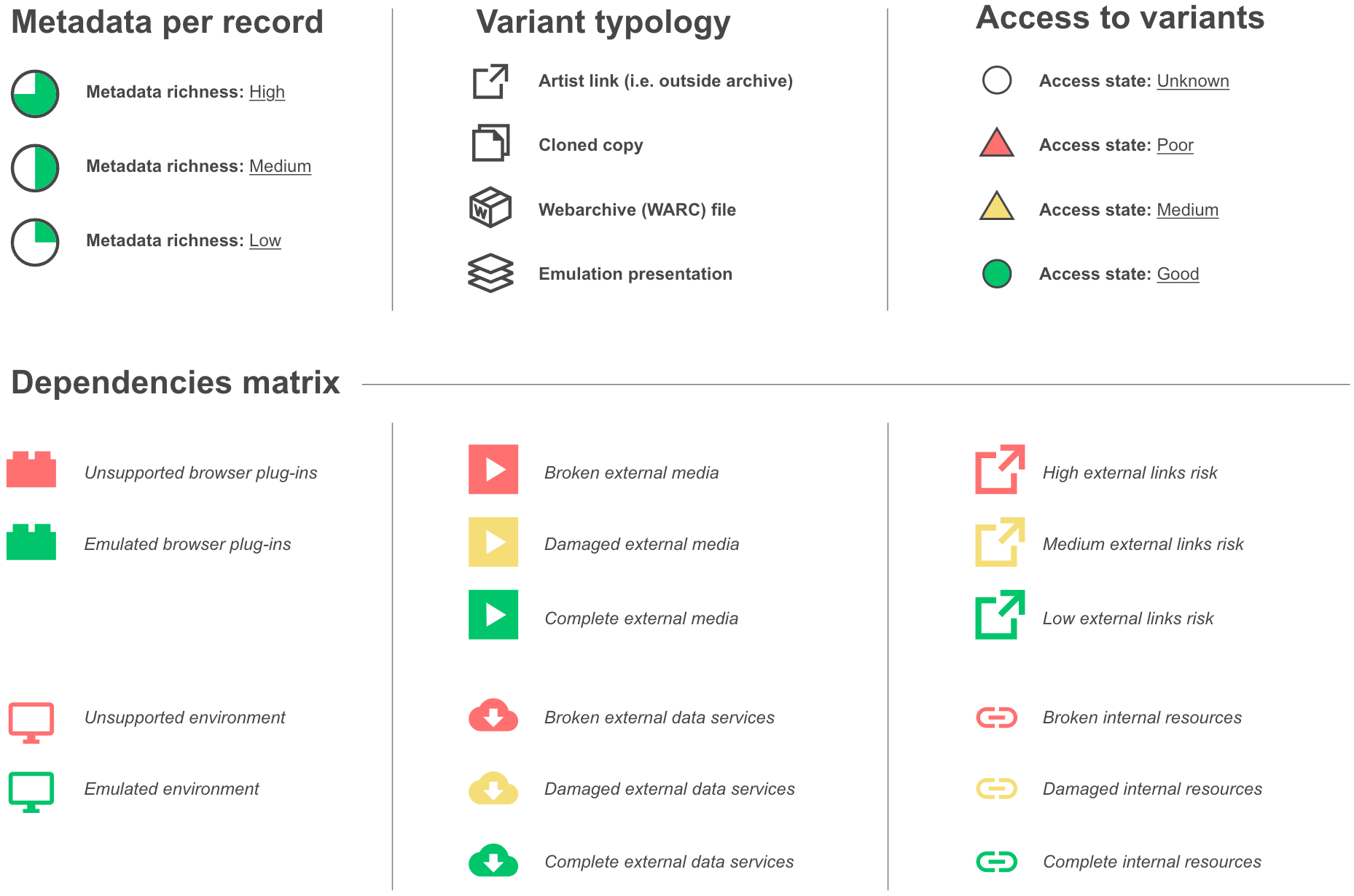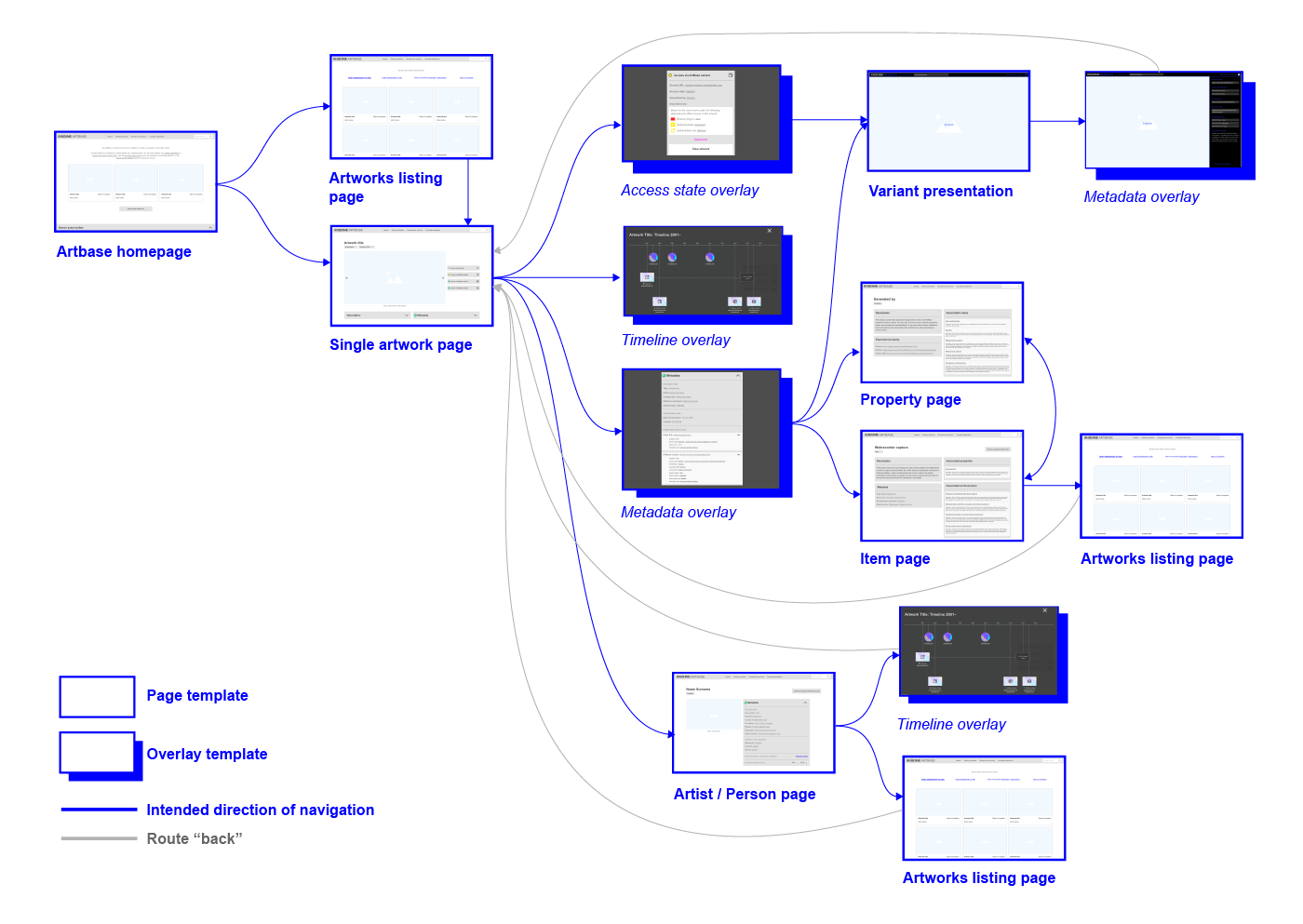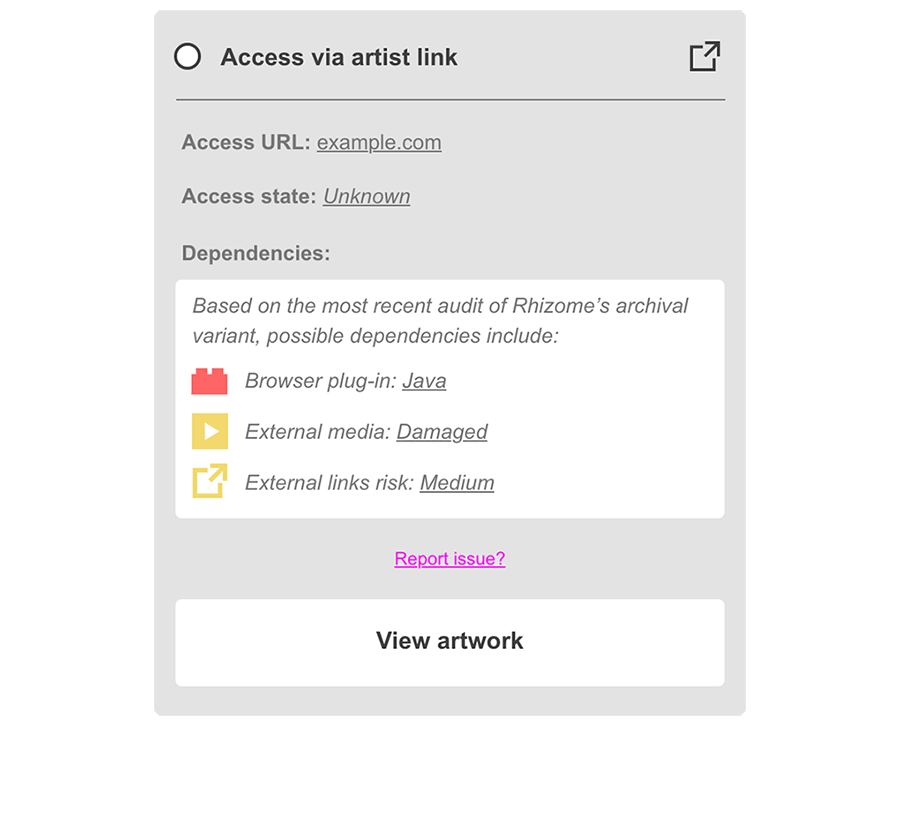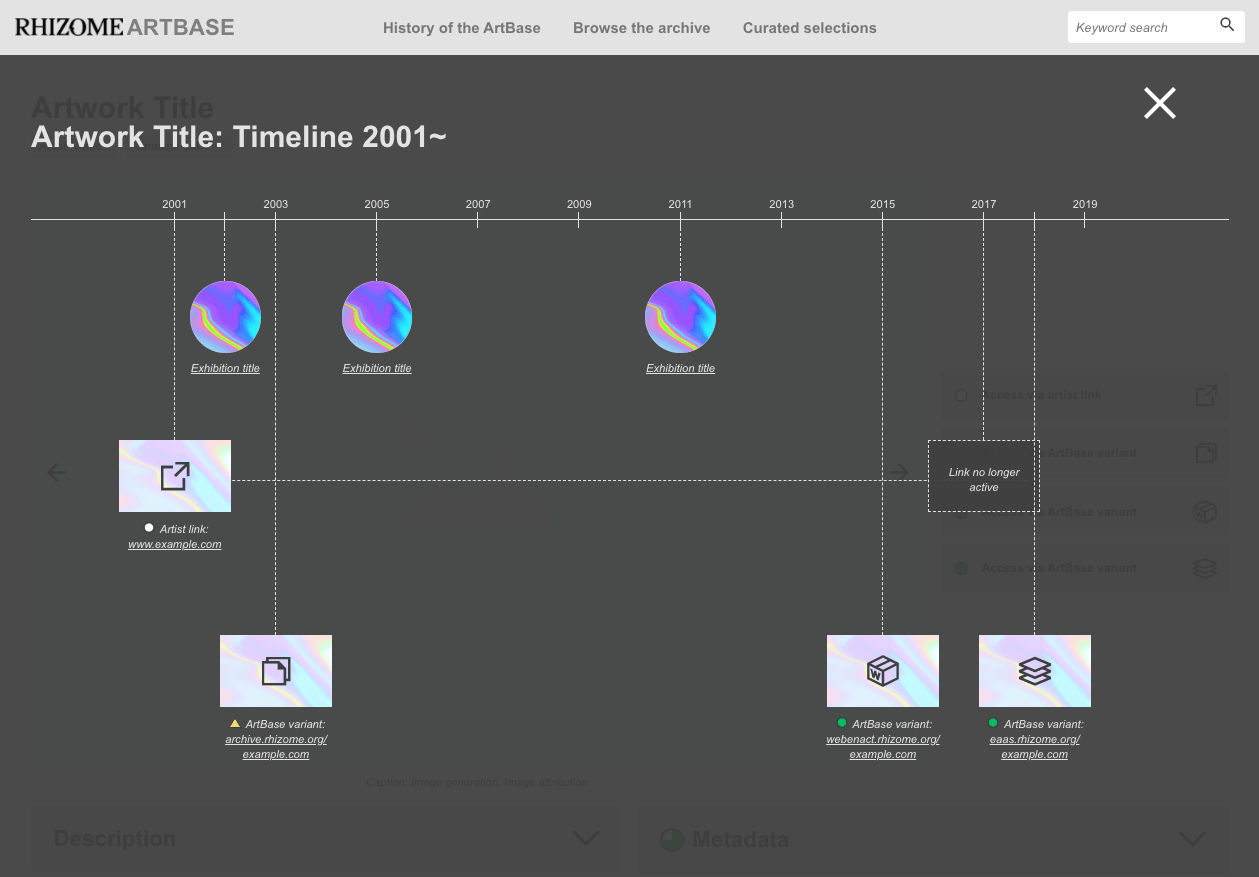Variant access points
As already mentioned in the data model outline, the ArtBase is capable of linking to and contextualizing different instantiations of a net art work, referred to as ‘variants’. These variants are accessed through purposefully designed access points available on the primary artwork record page in the archive. The access point prototypes attempt to communicate details around two key areas. First, the type of variant the user accessing and its location: Is it under the care of the artist or the archive? Is it a web archive or an emulated instance of the work? And second, the condition of this variant: Is it completely inaccessible, partly damaged, or generally functional? Following evaluation sessions with Rhizome’s in-house staff and external users, the prototype designs were updated to include additional visual cues in the form of icons to differentiate between variants, as well as more detailed terminology explanations available upon hovering over or clicking on the buttons.

Archive interface iconography
Crucially, all of the metaphors used in the presentation of artworks and variants are conventional interface components. For example, buttons to access a new area of a web interface; icons to indicate difference in typology; color-coded icons to signal warnings; and pop-ups with additional text descriptions. The iconography was designed and developed over several user workshop sessions. The metadata richness icons draw upon existing precedents in institutional archival interfaces. The variant typology indicators help differentiate variants based on the mode of their generation or accession to the ArtBase. The access state and dependencies matrix indicators build on previous research conducted at Rhizome, which examined the condition of records in the ArtBase. The ‘traffic light’ system indicating access state uses a combination of colors and symbols to increase accessibility. The dependencies categories indicate high to low levels of risk or damage and are represented by conventional symbols and the established color-coding system.


